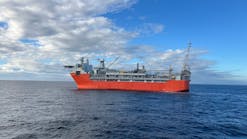Shale gas operations must hinge on environmental safety, panelists say
The US natural gas industry must continue to focus on ensuring that shale gas is produced in an environmentally safe manner in concert with continuing to disclose information about operations to help minimize public opposition to development, panelists told conference attendees Mar. 5 at IHS CERA Week in Houston.
The panel was composed mainly of members of the Secretary of Energy Advisory Board Subcommittee on Shale Gas Production, which issued its second 90-day report in late 2011 (OGJ Online, Nov. 10, 2011). In that report, the subcommittee reviewed progress made on its 20 recommendations outlined in its initial report, issued Aug. 18, 2011. These recommendations highlighted concerns about water quality and management, air quality and effects, and community impacts.
One panelist, John Deutch, institute professor at Massachusetts Institute of Technology and chairman of the SEAB subcommittee, stressed that shale gas boom in the US and its contribution to the nation’s energy mix—currently assessed at 30%—has been the most important energy development in his 50 years in the industry. He cautioned, however, that if environmental concerns surrounding the processes for shale gas extraction are not acknowledged and addressed by industry in a “serious, consistent, and real way,” public confidence will continue to falter, causing the expected expansion of shale gas production across the US to be delayed or halted outright.
Illustrating this point of the anticipated expansion of shale gas, Deutch noted some forecasters calling for the drilling of 100,000 shale gas wells over the next 10-15 years.
Responsible fracing
Panelists agreed that the public’s mindset to distrust industry stems mainly from a single hot-button issue, namely hydraulic fracturing, or fracing, and its potential effect on the environment.
Mark Zoback, professor of geophysics at Stanford University and also a member of the SEAB subcommittee, explained that it is industry’s duty to frac wells responsibly. He also noted that while safe fracing is important, a focus on well construction warrants as much, if not more, attention. One major public concern with regard to fracing, he noted, has been the effects of seismic impact on communities.
Zoback said there are five steps to manage seismic impact. First, avoid injection into active faults; second, reduce pressure changes at depths; third, if there is a perceived cause for concern, set up a seismic network to monitor activity in real time; fourth, work out protocols with regulators; and fifth, take action on what is observed and, if needed, prepare to abandon injection wells. “We need to get out in front of the problem,” he said.
Patrick Schorn, president, reservoir production group, Schlumberger, who did not serve as a member of the SEAB subcommittee, commented that at the end of the day, “there is room for improvement” with regard to fracing methods. He said his company and other service firms are working to reduce significantly the use of water and proppant in frac jobs, and are looking closely at better characterizing reservoirs to gain “a more targeted approach.”
Schorn estimates that roughly 30% of frac jobs don’t enhance a well’s production. He also said water and fracing fluid use could be cut by as much as 50% in many instances. And while water conservation remains important in the US, cuts in water use become even more vital in areas of the world where access to the resource is limited, he said.
Operators must identify the important areas of a reservoir to frac, Schorn said, adding, “This takes time, effort, and a change in work flow."
Daniel Yergin, IHS CERA chairman, who moderated the shale gas panel and was also a member of the SEAB subcommittee, noted that the subcommittee’s recommendations could at least serve as a “roadmap to problem-solving” the issues surrounding shale gas operations.
Deutch concluded the panel discussion saying that industry should “take the lead” in setting standards and become “much more aggressive in implementing changes.”
Contact Steven Poruban at [email protected].
Steven Poruban | Managing Editor-News
Steven Poruban was hired as staff writer for Oil & Gas Journal in October 1998. Two years later, he was promoted to senior staff writer. In October 2004, he was then promoted to senior editor. He now serves as managing editor-news.
Before working for OGJ, Steven was a reporter for Gas Daily and editor of Gas Transportation Report. He attended Boston University then transferred to and graduated from Ursinus College in Collegeville, Pa., with a BA in English in 1993.
